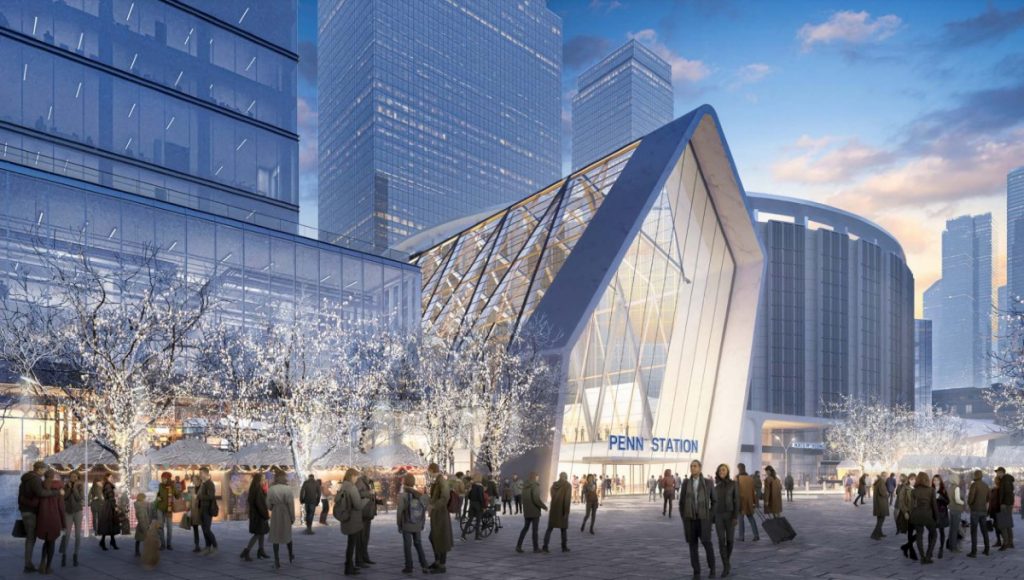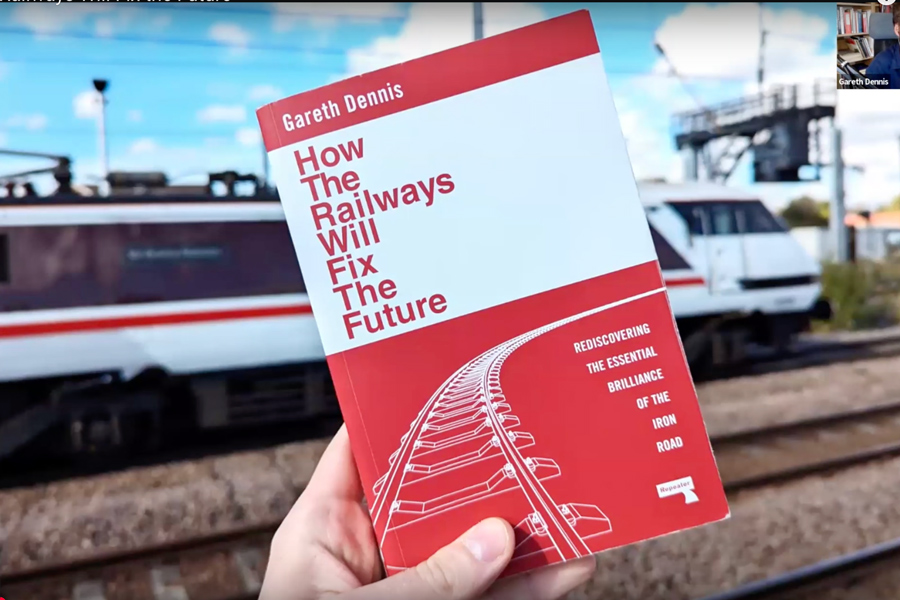Trains are the “one big powerful tool” that can move us toward a better future, according to railway engineer and author Gareth Dennis. He recently joined the Alliance for a webinar focused on his recent book, How the Railways will Fix the Future. Dennis argues that...
Plans to transform New York’s Penn Station—the busiest transportation hub in North America, serving about 650,000 riders every weekday (pre-pandemic)—are moving forward.
The $7 billion project would raise the station’s ceilings and install a 450-foot-long skylight to create a huge, light-filled main hall. One of the primary complaints about Penn Station is that its low ceiling makes it feel cramped and dingy. The New York Times has dubbed it “a raging dumpster fire, and New York’s governor called it a “hellhole.”
The redevelopment would also add eight new entrances, plus dozens of new escalators and elevators; expand underground passageways; add retail space; and upgrade the amenities generally. A new, 30,000-square-feet public plaza would be added outside the station, along with more protected bike lanes, expanded sidewalks, redesigned subway entrances, and landscaped areas for sitting.
The Penn Station project is at the heart of a plan to redevelop several square blocks in Midtown Manhattan. With a footprint of 18 million square feet and an estimated cost of $13 billion, it would be among the largest real-estate projects in American history, adding 10 new towers with office and residential space as well as a hotel.
The reimagined Penn Station would primarily serve Long Island Rail Road and NJ Transit commuters. Amtrak owns the station but recently moved its operations to Moynihan Train Hall, a $1.6 billion project adjacent to Penn Station. In an enthusiastically positive review of Moynihan when it opened in January 2021, the New York Times noted that the new hall is “clearly organized around passenger services and amenities,” with a 320-seating waiting room, first-rate art installations and pleasant bathrooms, and a beautiful lounge on a mezzanine that overlooks the hall.
Hochul announced the redevelopment plans for Penn Station—a scaled-back version of a plan floated two years ago by former governor Andrew Cuomo—last fall. The agency overseeing the project, Empire State Development, voted unanimously in favor of it last week. On Wednesday, the Public Authorities Control Board approved the project’s financing plans. Half of the funding will be provided by New York and New Jersey, and half will be provided by the federal government.
Divided Opinions
Critics are taking aim at these plans on multiple levels.
The financing of the real-estate component has been a particular target, since it will involve large tax breaks (up to $1.2 billion) for the lead developer, Vornado, at a time when the post-pandemic demand for office space is deeply uncertain. Critics also charge that the state has been less-than-transparent about its plans for funding the development—and about the risks to taxpayers if it fails to generate the expected revenues.
Critics also focus on the fact that the plan makes purely cosmetic changes to Penn Station and does nothing to increase its capacity or facilitate the flow of train traffic through it.
A fundamental premise of the current plans is that Penn Station is already overcrowded and can’t handle the surge in traffic that will come when the Gateway Program is completed in the early 2030s. Gateway is a massive, ongoing project to rebuild the tracks and expand capacity on 10-mile stretch that includes the North River Tunnel under the Hudson River.
The premise that Penn Station is overcrowded is the rationale for a proposed expansion involving a new facility, south of the current one. (That expansion plan is separate from the redevelopment plan.) But critics argue that Penn Station overcrowding could be solved by addressing design flaws and inefficiencies in the station itself—rather than building a new one, which will cost an estimated $13 billion and involve the destruction of several historical properties in the area.
Most notably, through-running (i.e., the capacity for trains to continue through the station, rather than turning back) would be a game-changer, since it would dramatically reduce dwell times (or the time that trains spend idling while passengers board and disembark).
And that would vastly increase the station’s capacity. In fact, the 21 tracks it currently has would be more than enough—and some could be removed to create wider platforms, according to one particularly fierce critic of the current plans.
He notes that dwell times in other busy stations are around a minute, yet planners for the Penn Station redevelopment assumed dwell times (with through-running) of eight minutes. If you assume, instead, a “reasonable figure of 2 minutes in dwell time per train,” he writes, through-running would create capacity at Penn Station that is several times greater than current capacity. This solution offers “a strong alternative to current plans” for a station expansion.
Whatever happens with Penn Station, the strong political will to transform shows that momentum is building. A decade from now, transportation will look a lot different than it does today in North America’s densest population center, its busiest transportation hub, and its most heavily used railroad corridor. There will be more trains, running more smoothly, with riders passing through newly or recently renovated stations.
Read More
The Penn Station $7 Billion Fix-UP Moves Ahead: Here’s What to Know
The Latest from HSRA
Our Latest Blog Posts
Check out the latest news, updates, and high speed rail insights from our blog!





